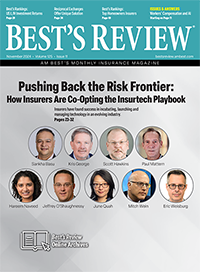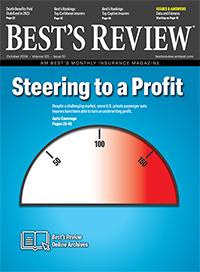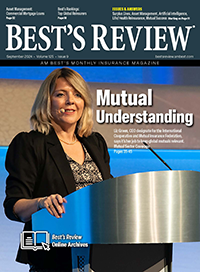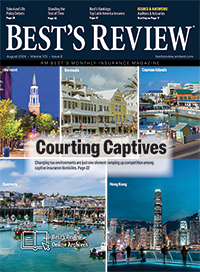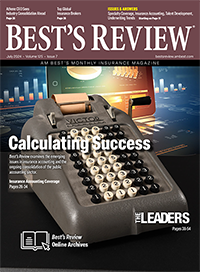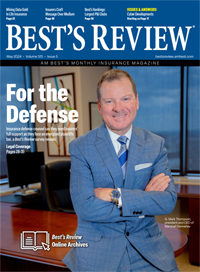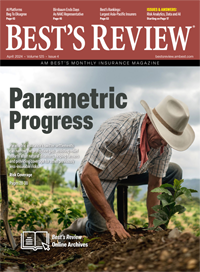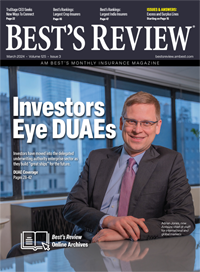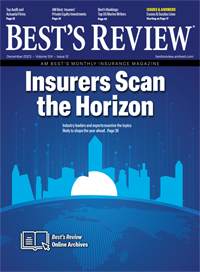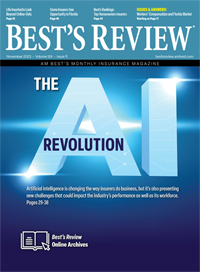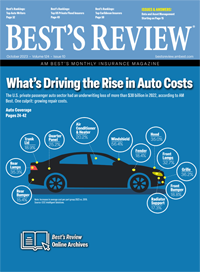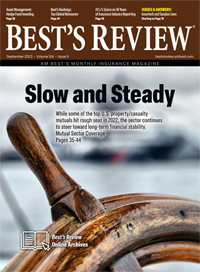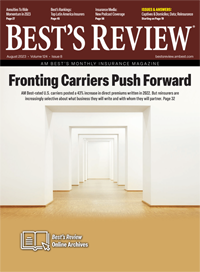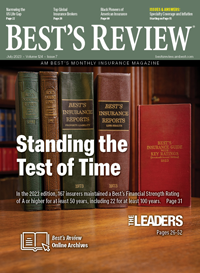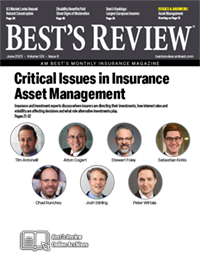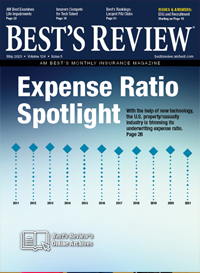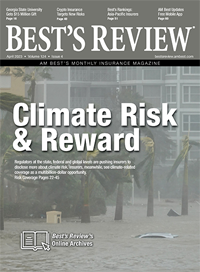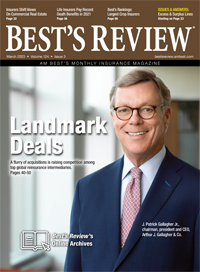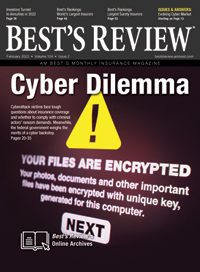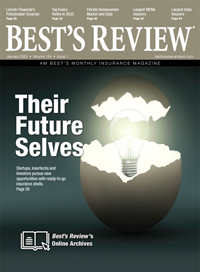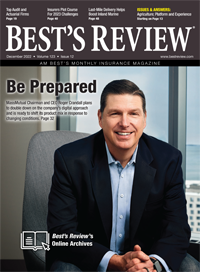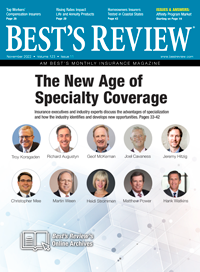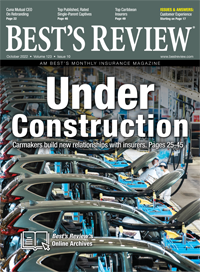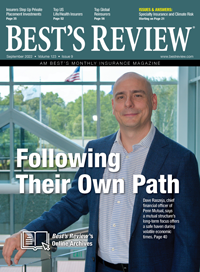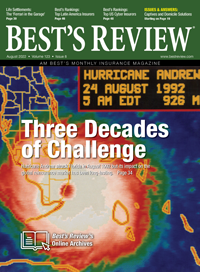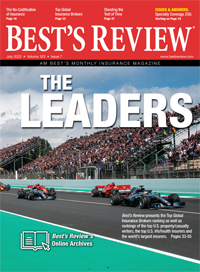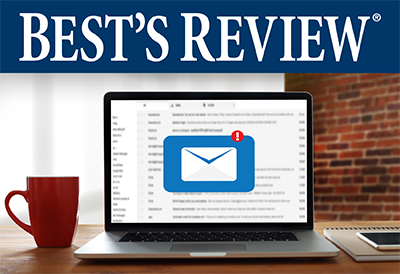Auto Insurance
Driving Distribution
U.S. private passenger auto insurers have followed a winding road over the last five decades, including the exodus of many leading writers. The industry is changing due to the growing clout of direct writers, more-demanding consumers and evolving distribution strategies.
- Lori Chordas
- October 2019
-





Key Points
- Reasons to Leave: Changing corporate structures, low-cost distribution and advertising tactics by competitors and highly regulated state markets have driven some carriers out of the private passenger auto market over the years.
- Solutions: The rise of direct writers and consumers’ demand for online service is signaling a need for new distribution models in the sector.
- What’s Ahead: The advent of technology and the imminent rise of autonomous vehicles will create new opportunities and challenges for personal auto writers.
Viewed on a short-term basis, the lineup of insurers competing in the U.S. private passenger sector may appear relatively static.
But a look at historical insurance data—AM Best began digitizing personal lines insurance information in 1971, with 1975 as the first full year of auto data—shows regular shifts in lineup and dominance. Some of yesterday's leading writers remain familiar to today's insurance audience, but for different reasons.
Using 1975 as a starting point, mergers, acquisitions, failures and withdrawals winnowed large parts of the field. In 1975, 38 insurers held U.S. market share better than 0.5% of the total U.S. auto market. By 2018, that number dropped to 22. Of those 22, only 11 appear in the 1975 list. What drove change, both acquisitions and exits, is a mix of competition, evolving distribution and investor preferences.
In the mid-1970s, Aetna sat in fifth place among leading writers of private passenger auto, based on direct written premiums, trailing State Farm, Allstate, Geico and Farmers.
Aetna had a head start, having launched its auto coverage in 1907. The insurer's pioneering work included the first combination auto policy, melding several types of coverage into one policy, and the first driving simulator used by high school students.
In 1975, Aetna collected more than $596 million in direct premiums written in the auto line, according to AM Best data.
But sliding profitability and market share eventually convinced Aetna to narrow its focus, turning away from property/casualty personal lines and toward life and health insurance.
In 1996, Aetna sold its property/casualty operations to Travelers Insurance Group for $4 billion. The acquisition moved Travelers, formerly No. 19, to the Top 10 in the domestic private passenger auto insurance business.
Dozens of other high-profile insurers, including Continental Corp., Reliance, Fireman's Fund and United States F&G, have shed their books of auto business.
Some were acquired by competitors looking for sector growth. Others abandoned auto coverage, and sometimes the insurance industry, completely.
Brian Sullivan, editor of Risk Information Inc.'s Auto Insurance Report newsletter, said many of the exiting companies fell victim to competitors' increasingly effective distribution strategies.
Many of the companies that abandoned auto were multiline insurers, writing primarily through independent insurance agents, he said.
Sullivan is quick to note that the problem is not independent agents, but with the insurers themselves. “There are plenty of companies using independent agents that are still thriving today,” he said.
What it highlights is that the distribution environment changed, favoring insurers with increasingly sophisticated underwriting and aggressive marketing, Sullivan said.
The impact of direct writers, first exemplified by companies such as State Farm and Allstate using captive agents and later by Geico and Progressive Direct without agents, has transformed how personal auto insurance is marketed and sold. Direct writers market and transact directly with end-users, although some employ a mix of direct and independent agency selling.
The trend continues to build.
In 2005, direct writers without agents generated 34% of personal lines premium, according to the National Association of Insurance Commissioners. By 2015, that number reached 47%, with much of the remainder coming from agencies, both independent and captive.
“It's not that one distribution model is more successful than another,” Sullivan said. “You can be big or small; an independent agency, a captive agency, a direct writer, or all three; a national brand or a regional company. It doesn't matter. Every one of those models has examples of success.”
The rise of digital communications and evolving consumer demands is forcing insurers to embrace what University of South Carolina's Dr. Robert Hartwig calls “channel fusion.” Hartwig is clinical associate professor in finance and the director for the Center for Risk and Uncertainty Management at the University of South Carolina's Darla Moore School of Business.
Agency-focused insurers are challenged by the online platforms of direct writers and direct-response carriers. The direct sellers allow consumers to complete an insurance transaction on a mobile app or online. The account is then often assigned to an agent, said Hartwig, the former president of the Insurance Information Institute.
“That doesn't remove agents from the process. But it allows them in real time to work with and educate consumers about products, how to use them and ways to reduce premiums and avoid potential losses,” he said.
“Many former personal auto insurers failed in the market because they weren't very good at being insurance companies,” Sullivan said. They lacked structure, good pricing, agency interface, an efficient claims-settlement process and foresight about the impending shift in distribution, he said.
Exit Sign
In the 1980s and 1990s, stock-based insurers drew the attention of Wall Street analysts, who prioritize market focus and efficient returns.
“Wall Street was valuing health business based on members. That created a much higher multiple than traditional P/C and life, which are valued at price-to-book,” Colin Devine, principal of C. Devine & Associates, said.
Companies such as Cigna, Aetna, Prudential and PruCare disposed of the lower multiple variation business to focus on “the higher ones to drive the stock price up,” he said.
In 1990, Cigna exited private passenger auto, citing losses from higher repair bills, medical and legal expenses. Cigna chose to tighten its focus on health insurance and group benefits.
Despite its modern-day peak of just under 2% of the U.S. private passenger auto market in 1976, Cigna wasn't “overly successful at personal lines and showed no evidence of modernizing the business,” Risk Information's Sullivan said.
“Also, they didn't like the volatility of the P/C market, so they had a choice to get good at it or get out. They chose the latter,” he said.
Continental, once the No. 13 U.S. auto insurer, shed its personal auto book for another line, commercial auto. CNA acquired Continental in 1995 for $1.1 billion, which at the time was reported to be the largest P/C insurance merger in the United States in 20 years.
Consolidation helped remake the domestic auto market in each decade.
Moving into the post-2000 era, St. Paul Cos. merged with Travelers. Ace Ltd. acquired Fireman's Fund's U.S. high net worth personal lines business for $365 million. Liberty Mutual acquired Ohio Casualty, “which was having a difficult time standing on its own,” Sullivan said.
Another high-profile acquisition came with Allstate's 2011 purchase of Esurance. The nearly $1 billion acquisition helped Allstate double its market share of the direct auto channel.
Differences among states in regulation, legislation and litigation can create strikingly different business environments for auto insurers.
In the 1990s, New Jersey was a poster child for a daunting business environment for insurers, with high frequency of accidents, a pro-plaintiff legal environment, high levels of insurance fraud, generous no-fault benefits and the highest liability premiums in the nation.
Several insurers operating in New Jersey withdrew from the state, including American International Insurance Company of New Jersey; Harleysville-Garden State Insurance; Providence Washington Insurance and State Farm Indemnity, the state's largest writer.
In 1998, New Jersey enacted the Automobile Insurance Cost Reduction Act to decrease auto rates for consumers and loss costs for insurers. The reform wasn't enough to keep insurers from exiting the state, nor did it attract market leaders to enter. Eventually the state was able to create an environment more conducive to auto insurers.
Around the same time, Massachusetts was also in the midst of an ailing auto insurance market. Fireman's Fund and Holyoke Mutual Insurance were examples of insurers that withdrew from the highly regulated state market.
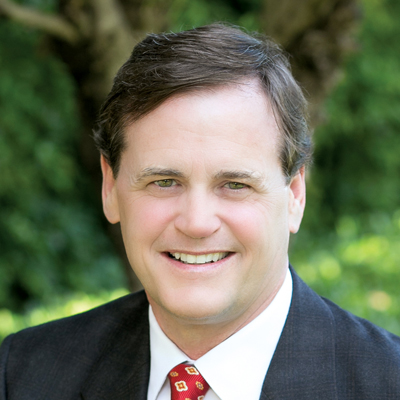
Auto insurance is a high-stakes battle. "It certainly has shown us that insurance in the market can't be written with anything less than a 100% commitment."
Brian Sullivan
Risk Information Inc.
Full Speed Ahead
For decades, insurers such as State Farm, Allstate, Nationwide, American Family Insurance and Farmers relied on in-house agents to market. Most relied on a combination of a portfolio of products to sell, combined with extensive marketing and advertising support.
“The captive agent distribution model was solidifying its dominance due to lower costs and the ability to market a brand more effectively, using national media,” Sullivan said.
At the turn of the century, State Farm, the leader in the market based on direct written premiums, stepped up its plans for national growth.
“They did that by slashing premiums,” Sullivan said, adding that State Farm made two mistakes. “They cut prices for the wrong people, causing premiums to fall and loss ratios to rise. They also lost billions in capital in a very short time, at a time when Progressive, Travelers and others were becoming smarter and more sophisticated at pricing. State Farm still had a butter knife and everyone else had a scalpel.”
State Farm righted the ship with more modern and accurate pricing in a remarkably short period of time and “eventually got back all the capital they lost and more," Sullivan said.
State Farm's direct-writing competitors saw gains during that same period.
In 1975, Progressive Group's market share was 0.17%, rising to 11% in 2018. Progressive follows a hybrid strategy, employing both direct selling and independent agents, supported by national advertising.
Geico maintains a direct approach in auto. The Washington, D.C.-based insurer, which generates one of the lowest expense ratios in the industry, continues to expand its geographic reach. In 2018, Geico spent more than $747 million in advertising, according to Kantar Media.
Geico, Progressive and USAA, three of the industry's most aggressive advertisers, collectively gained 17% market share over the past two decades, according to a 2016 Boston Consulting Group and Morgan Stanley report on the U.S. small-business insurance market. That growth came “at the expense of both larger and smaller competitors who are unable or unwilling to adapt to the changing consumer preference,” according to the report.
“That really speaks to the importance of distribution,” AM Best senior director Greg Williams said.
Advertising has become a differentiator in the highly competitive U.S. personal auto market.
In 2018, auto insurers spent nearly $2.4 billion in advertising, up significantly from $201 million in 1998, according to Kantar Media.
Many insurers' auto advertising focuses on price, but that's only one element of the selling proposition, said Christopher Boggs, executive director of the Independent Agents and Insurance Brokers of America's Virtual University.
Boggs sees a long future for the agent-focused distribution model. “Advertisers in the auto market have tried to convince us that insurance is a commodity but it's not. Insurance must be customized to meet the insured's needs and that requires the work of a good agent who understands insurance.”
As the largest sector of the U.S. property/casualty market, auto is a high-stakes battle. “It certainly has shown us that insurance in the market can't be written with anything less than a 100% commitment,” Sullivan said.
Commitment requires focus. Companies that exited auto cite many reasons, but time has “proved their hearts were elsewhere, often in commercial lines. And that was bad for all of them,” Sullivan said.
“Look at companies like Travelers and The Hartford, which are successful in both commercial and personal lines,” he said. “But you can't treat personal lines as a secondary business and expect to be successful and grow.”
Even a commitment to innovation, while important, is no guarantee of a long business life.
“In the mid-'90s, Continental unsuccessfully tried to launch an online auto insurance policy on CompuServe where consumers would go online to complete an application, fax it to an agent and Continental would follow up with the consumer in five business days,” Sullivan said.
During that same period, Progressive was well into its long-running commitment to technological improvement, upgrading how it handles claims, pricing and interfacing with agencies. “They weren't selling online and didn't have a direct operation but they were building a strong insurance company,” he said.
“Innovation is nice but it's not enough. You have to pick the right horse to ride,” Sullivan said.
What's Ahead
Future disrupters are likely to include advanced driver assistance systems, shared mobility, autonomous vehicles and behavior-based analytics. All will create opportunities, headaches and, in some cases, spur consolidation, University of South Carolina's Hartwig said.
“Those at the top of the market or anyone who aspires to be there needs to innovate on what insurance offers and how it's priced, presented and interacted with by consumers,” said Adam Pichon, vice president and general manager of LexisNexis Risk Solutions' auto vertical.
As of publication, AM Best had a “stable” rating outlook for the private passenger auto insurance market. After weakened performances in 2015 and 2016, U.S. auto writers appear to be turning the corner, according to Personal Auto Insurers Regain Traction as Combined Ratio Improves, an AM Best Special Report.
The powerful hand of technology almost guarantees that the next 43 years of the auto sector won't repeat the last.
Morgan Stanley projects that the auto insurance business could shrink 80% by 2040 unless it finds a way to adapt to challenges that include autonomous driving and shared mobility.
“Auto insurance does have an expiration date in the sense that somewhere in the future accidents will dramatically fall because of new technology,” Sullivan said. He doesn't expect major impact from autonomous vehicles for another 10 to 20 years.
In the meantime, insurers should ready themselves for impending changes in the market, including imminent questions about liability when drivers are removed from the process, Hartwig said.
U.S. private passenger auto direct written premiums topped $246 billion in 2018, a near-continuous rise from $16.9 billion in 1975, according to AM Best.
“The personal auto market is here to stay. In fact, I expect it to remain the largest of all the P/C lines, at least through the 2020s,” Hartwig said.
Data used in this article and exhibits is from AM Best's database of insurance information. For information about obtaining this data file, which contains information on auto insurers from 1971 to 2018, contact AM Best's Custom Data Services at (908) 439-2200, ext. 5383 or email custom_products@ambest.com.


